In the context of modern-day network infrastructures, network switches hold an essential position. They allow the smooth flow of communication among devices and make sure that ultimately data travels throughout your network efficiently. However, considering that there are now many switches, trying to find the one that meets the right balance of efficiency, performance, and security can be quite a hard task to undertake. In this guide, we will explore the different types of network switches as well as all the necessary attributes to consider when selecting one and point out those worth considering based on securing and efficiency purposes meeting with the standards demanded by high-speed and security-oriented digital environments today.
Understanding Network Switches
Primarily, network switches are devices that connect various devices within the local area network (LAN) such as computers, servers, printers, and other network devices. That is, from one device or client, it receives a data packet, reads its destination address, and transmits it to the proper destination depending upon which segment of the network contains the desired device. With this feature, network traffic is decreased and communication between related devices improves.
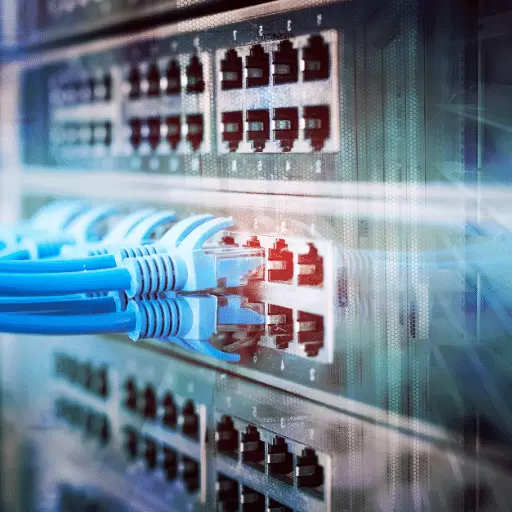
There are different types of switches though, all differing on sizes, shapes, and features offering a variety of functionalities. Understanding different types of switches in networking is the most important aspect in choosing the right and best switch for your network.
Types of Network Switches
There are a variety of ways that network switches can be classified according to purpose, size, and the scope of the network they address. Let’s see what the several categories of network switches are:
1. Unmanaged Switches
Unmanaged switches have the least complexity. Switches do require any configuration and work on arrival. Unmanaged switches are plug-and-play devices so they start forwarding data once they are connected to the network.
- Best For: A small home or office network with just a few devices.
- Advantages: Inexpensive, very easy to set up.
- Disadvantages: Little control over network traffic, no fancy features like VLANs or Quality of Service (QoS).
2. Managed Switches
More advanced features are available on the managed and configurable switches, which empower and control network traffic. Switches provide more granular control over the performance of the network, such as VLAN support, traffic prioritization, and security measures.
- Suitable for: Medium scale to large-scale company or enterprise networks, where customization and serious management are needed.
- Pros: Flexible control over network performance, heavy emphasis on the security aspects, and the traffic management of the features built around this idea.
- Cons: High cost, need for expertise in configuring and maintaining the same.
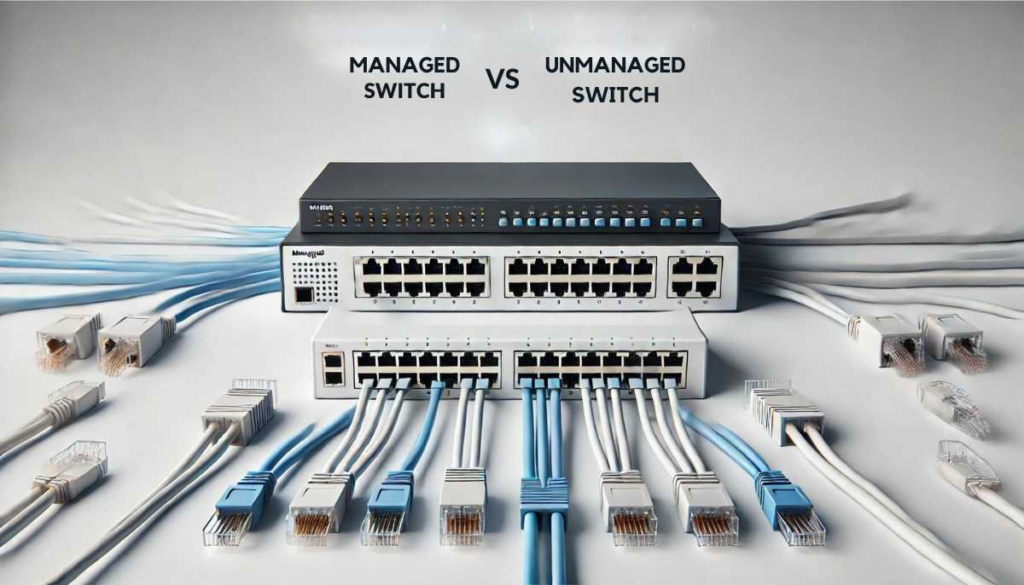
3. Smart Switches
They would give some essential capabilities in making VLAN support, network monitoring, and basic security functions as they are intended to be managed than the fully managed switches. This is mostly settled in a balance between unmanaged and fully managed switches.
- Ideal for: Small-to-mid-sized businesses seeking more control on their network compared to what is likely gained with fully managed switch.
- Pros: More controls than unmanaged switches for less set-up complication compared to fully managed switches.
- Cons: Limited features, however better when matched with fully managed switches.
4. PoE (Power over Ethernet) Switches
PoE switches were conceived specially provide data connectivity as well as electrical power the same Ethernet cable devices using one. It’s especially helpful devices like IP cameras, VoIP phones, and wireless access points that need both power and data connections.
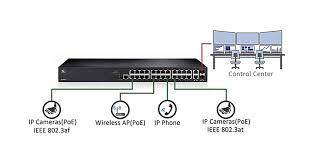
- Best for: Businesses or environments using many power-hungry devices.
- Pros: Cabled devices do not need separate power lines.
- Cons: Cost and power consumption rather more expensive compared to non-PoE switches.
5. Layer 3 Switches (Routing Switches)
To perform IP routing tasks among different VLANs and subnets, layer 3 switches perform the duties of a traditional switch along with the routing capabilities just like a router.
- Best for: Larger networks where routing between different VLANs/subnets is needed.
- Pros: Better for the routing capabilities and eliminates the need for separate routers.
- Cons: More expensive than a layer 2 switch, will require complicated and advanced configuration during management.
6. Stackable Switches
Stackable switches make multiple separate hardware switches to be connected together and managed as a single matrix. So, it is scalable for network infrastructure but easier to expand a network easily. It is ideal for a very expanding business or good sized scaling a network that requires extra strength.
- Best for: Growing businesses or networks that require scalability and high availability.
- Advantages: Scalable and easy to manage multiple switches.
- Disadvantages: They cost more. More hardware is needed for stacking.
Most Secure and Efficient Switches
When security and efficiency concerns are top of your priority list. Carefully choosing a switch for your network makes for a very smart choice. For example, a secure switch would ensure that the flow of data is secure from cyber threats. Whereas an effective switch will have minimum delays even when the network is under heavy traffic.
1. Cisco Catalyst 9000 Series
- Security Features: The Cisco Catalyst 9000 Series switches are said to have extensive built-in security features such as encryption traffic analytics for encrypted anomalies, secure boot, and segmentation. They have centrally aligned authentication and authorization from Cisco Identity Services Engine.
- Efficiency Features: The Cisco Catalyst 9000 series has advanced power management modes, energy-efficient designs, and dense port configurations-an excellent formula for optimal high-bandwidth performance and superior scalability.
- Why it’s a top pick: What Cisco Networking Products is to the world is what Catalyst series brings with it-security, scalability, and performance-all of these qualities necessary and stand out in a complete enterprise environment.
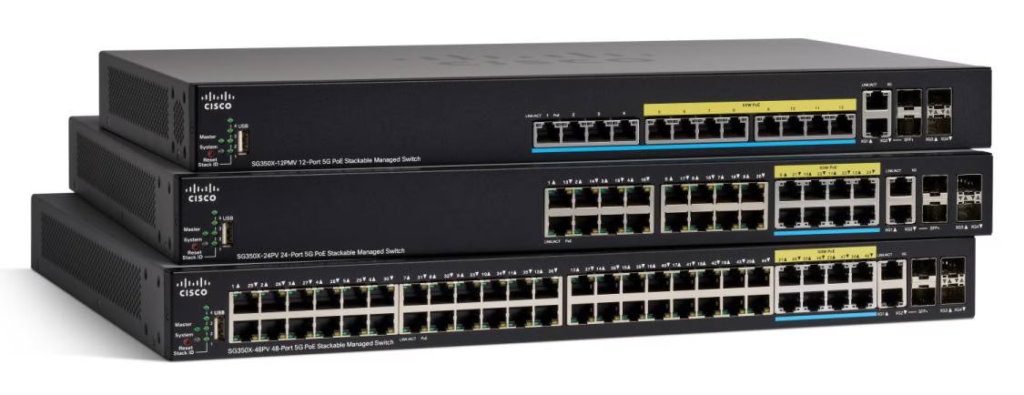
2. Juniper EX Series
- Security Features: Advanced denial of service protection, traffic encryption, and secure network access control all belong to the general security capabilities found in Juniper EX Series switches.
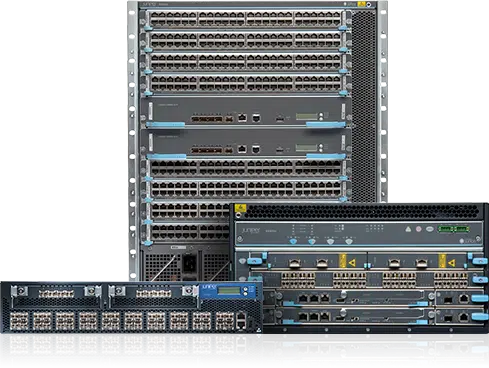
- Efficiency Features: They are immersed in virtual chassis and operational on a much less power-consuming note with much efficiency.
- Why It’s a Top Pick: EDGE Series becomes exceptional because of its heavy reliance on security hardening. While preserving memorable high-throughput network performance, thus having a perfect fit for an enterprise and a data center.
3. Aruba 2930F Series
- Security Features: Aruba switches have strong security features like RBAC (role-based access control), secure communication through encryption, and ClearPass integration for device authentication.
- Efficiency Features: With easy-to-manage design, a high performance in connectivity is seen on the 2930F series switch, with power over Ethernet or PoE+. This is mainly useful to bring up all power-hungry equipment and the presence of devices from IoT.
- Why it’s a top pick: Security comes first and foremost as recognition in the Aruba switch plus also 2930F brings better performance. Especially in multiply Wi-Fi heavy environments.
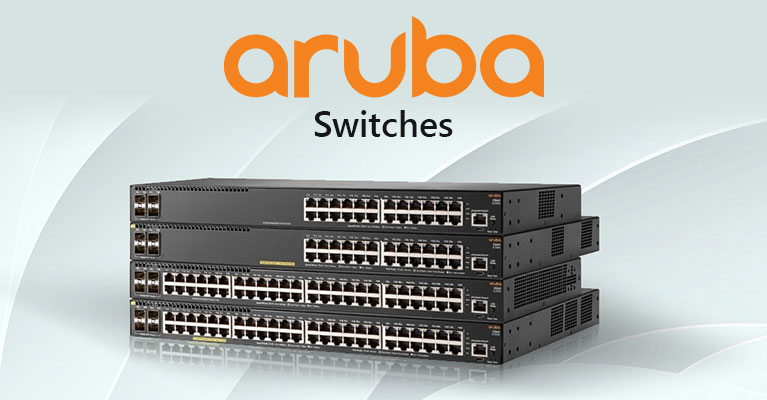
4. Ubiquiti UniFi Switches
- Security Features: Despite that Ubiquiti has itself made known that their UniFi switches. Basic security features-as VLANs, port isolation and 802.1X authentication.
- Performance Perks: In any way, UniFi switches are more famous for their lower-order pricing than other switches with equivalent throughput, PoE capabilities, and stackable for simple scale-ups.
- Great for: Nicknaming Ubiquiti’s pick as the best switch for purchase for small-scale to medium-sized businesses. Home offices that require balance-between security, performance, and price.

Factors to Consider When Choosing a Network Switch
- The Size of the Network: Consider the size of the network you have by now or require in the future. For small scale networks, unmanaged or smart switches will suffice, while larger, more complex networks would require managed or Layer 3 switches.
- Security Demands: Reputed switches should have provisions considering which strong security protocols—802.1X—and secure access controls need to be enabled by use of ACLs, as in most cases, secure management, such as SSH or SNMPv3, is incorporated with them.
- Power Requirements: Given that you run devices needing PoE power-a medium which gives a chance to all to be powered from the same switch-source-the switch has to provide PoE or PoE+ so that one doesn’t have to bring in another must-have thing.
- Future Growth: The switch must scale with the network as it grows. Stackable switches or switches with high port density provide flexibility as your network evolves.
Conclusion
As you design your network, the core foundation will be the types of switches in networking that you choose to put in place. Smaller installations run well with unmanaged switches or intelligent switches, but more complex and high-demand networks will need you to have managed switches, Layer 3 switches, or PoE switches. For security features and efficiency, top-tier models from suppliers like Cisco, Juniper, Aruba, and Ubiquiti are designed to make modern enterprises’ requirements. Therefore, with the right switch chosen and a better look afforded you toward your network’s needs, you should be sure that your infrastructure-that is “performance” and by provocation “attacks”-will not be excludedistique as action done to it.



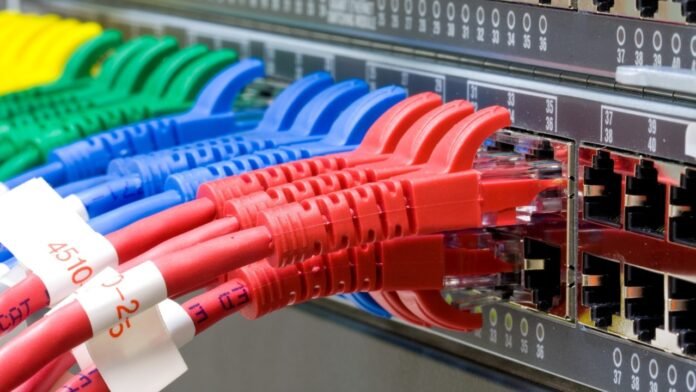
Excellent breakdown of network switch types! The distinction between managed, unmanaged, and smart switches is particularly helpful for organizations seeking to optimize their network infrastructure. I appreciate how the article highlights the importance of considering security, scalability, and performance when selecting the right switch for specific use cases. Well-researched and informative content – keep up the great work!
Thank you for the insightful breakdown of network switch types! The clear explanation of managed, unmanaged, and smart switches is especially valuable for businesses looking to enhance their network setup. I really appreciate how the article emphasizes the key factors—security, scalability, and performance—that should be considered when choosing the ideal switch for particular needs. It’s a well-researched and informative piece—great job, and keep it up!